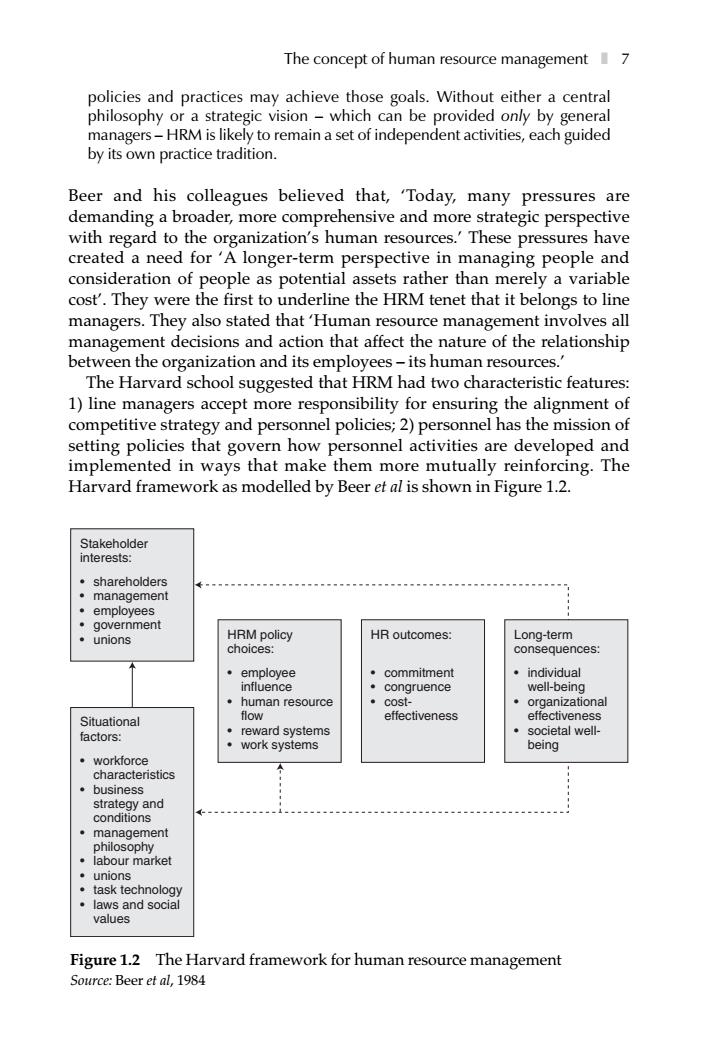正在加载图片...

The concept of human resource management7 policies and practices may achieve those goals.Without either a centra philosophy or a strategic vision-which can be provided only by general managers-HRM is likely to remain a set of independent activities,each guided by its own practice tradition. Beer and his colleagues believed that,'Today,many pressures are demanding a broader,more comprehensive and more strategic perspective with regard to the organization's human resources.'These pressures have created a need forA longer-term perspective in managing people and consideration of people as potential assets rather than merely a variable cost'.They were the first to underline the HRM tenet that it belongs to line managers.They also stated that'Human resource management involves all management decisions and action that affect the nature of the relationship between the organization and its employees-its human resources.' The Harvard school suggested that HRM had two characteristic features: 1)line managers accept more responsibility for ensuring the alignment o competitive strategy and personnel policies:2)personnel has the mission of setting policies that govern how personnel activities are developed and ented in ays that em mor e mutually reinfor Haryard framework as modelled by Beersso Stakeholder shareholder management government unions HRM policy HR outcomes: Long-term choices: consequences individual gruence well-bei flown resource effectiveness ·workforce and nage nen labour market ·la values Figure 1.2 The Harvard framework for human resource management Source:Beer et al,1984 policies and practices may achieve those goals. Without either a central philosophy or a strategic vision – which can be provided only by general managers – HRM is likely to remain a set of independent activities, each guided by its own practice tradition. Beer and his colleagues believed that, ‘Today, many pressures are demanding a broader, more comprehensive and more strategic perspective with regard to the organization’s human resources.’ These pressures have created a need for ‘A longer-term perspective in managing people and consideration of people as potential assets rather than merely a variable cost’. They were the first to underline the HRM tenet that it belongs to line managers. They also stated that ‘Human resource management involves all management decisions and action that affect the nature of the relationship between the organization and its employees – its human resources.’ The Harvard school suggested that HRM had two characteristic features: 1) line managers accept more responsibility for ensuring the alignment of competitive strategy and personnel policies; 2) personnel has the mission of setting policies that govern how personnel activities are developed and implemented in ways that make them more mutually reinforcing. The Harvard framework as modelled by Beer et al is shown in Figure 1.2. The concept of human resource management l 7 Figure 1.2 The Harvard framework for human resource management Source: Beer et al, 1984 Stakeholder interests: • shareholders • management • employees • government • unions HRM policy choices: • employee influence • human resource flow • reward systems • work systems HR outcomes: • commitment • congruence • cost- effectiveness Long-term consequences: • individual well-being • organizational effectiveness • societal well- being Situational factors: • workforce characteristics • business strategy and conditions • management philosophy • labour market • unions • task technology • laws and social values